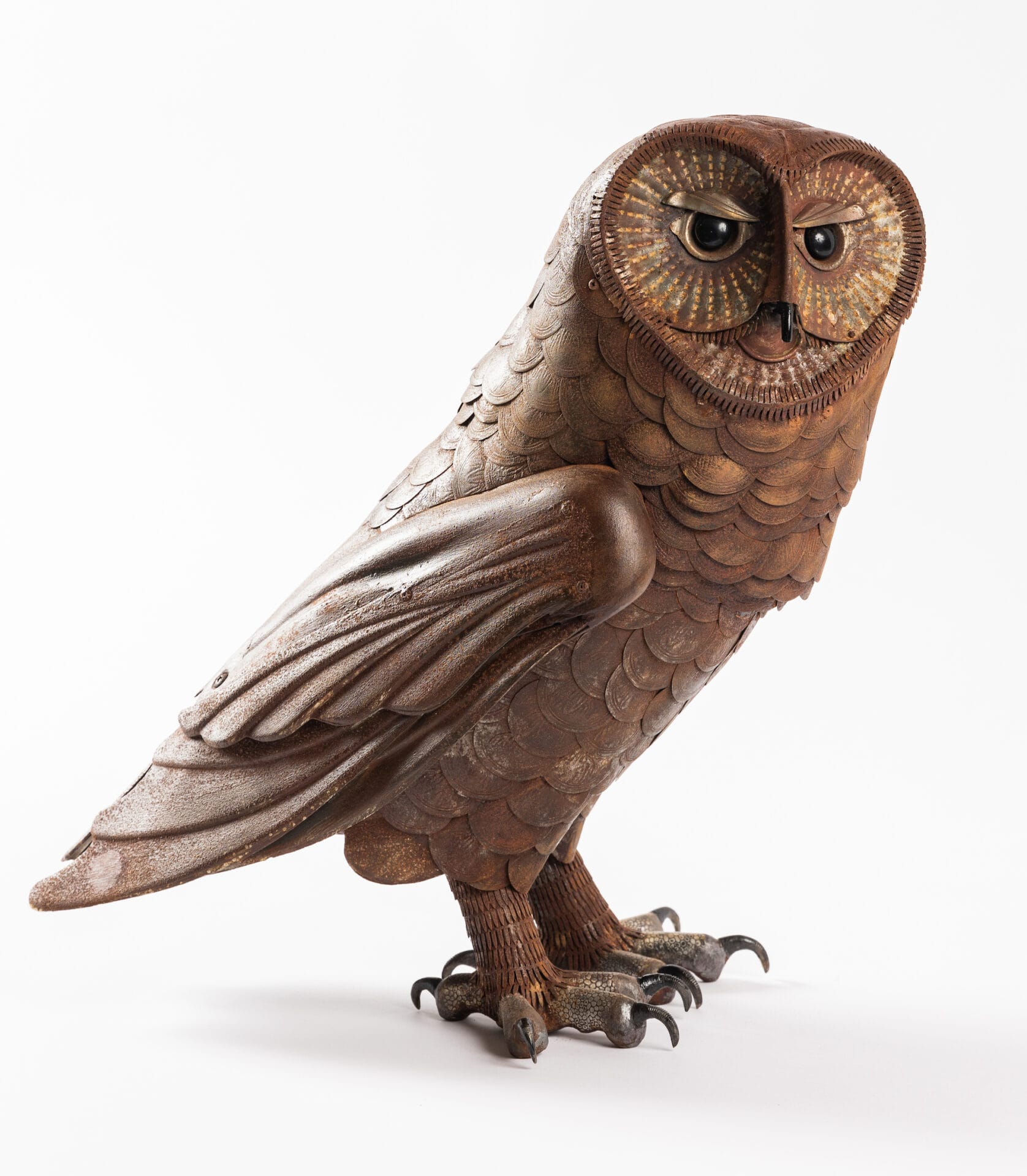This post was originally published on Colossal
“Chouette (Owl)” (2023), metal mixed media sculpture, 38 x 36 centimeters. Photo courtesy of Sladmore Gallery. All images © Edouard Martinet, shared with permission
With a body made from a motorcycle fender, wings from bike chain guards, and legs from tapestry staples and spectacle case parts, a beady-eyed owl comes to life from discarded metal.
French artist Edouard Martinet (previously) has a knack for revitalizing materials like motor components, medical implements, bicycle parts, and other accessories into meticulously detailed animals. While one fish takes shape from fan blades, cake molds, spatulas, and oil lamp badges, another’s teeth and bones are composed of upholstery staples and tablespoons.
Martinet sources his materials from flea markets and garage sales, seeing potential in a wide range of shapes, densities, and textures. In the studio, he painstakingly manipulates the metal into unique puzzle-like pieces that fit together precisely, relying on screws to fasten them together rather than welding.
If you’re in Paris this April, stop by Galerie Bettina, where Martinet will exhibit a combination of bronze and unique sculptures. In November, the artist will present a solo exhibition of new work at Sladmore Gallery in London. Until then, follow Martinet on Instagram for updates.

Underside detail of “Hercules Beetle (Dynaste Hercules)” (2022), bronze, from an edition of 8, cast using the lost wax process at Fonderie Rosini, Paris, 24 x 60 centimeters. Photo courtesy of Sladmore Gallery

“Hercules Beetle (Dynaste Hercules)” (2022). Photo courtesy of Sladmore Gallery

Detail of “Chouette (Owl)” (2023). Photo by Laurent Guizard

Photo by Laurent Guizard

“Stickleback” (2022), metal mixed media sculpture, 24 x 120 centimeters. Photo courtesy of Sladmore Gallery

Photo by Xavier Scheinkmann

Photo by Xavier Scheinkmann

Left: Martinet in his studio. Photo courtesy of Sladmore Gallery. Right: “Autruche.” Photo by Xavier Scheinkmann

Photo by Xavier Scheinkmann
Do stories and artists like this matter to you? Become a Colossal Member today and support independent arts publishing for as little as $5 per month. The article From Recycled Motors and Discarded Metals, Edouard Martinet Imagines Meticulously Detailed Wildlife appeared first on Colossal.





0 Comments